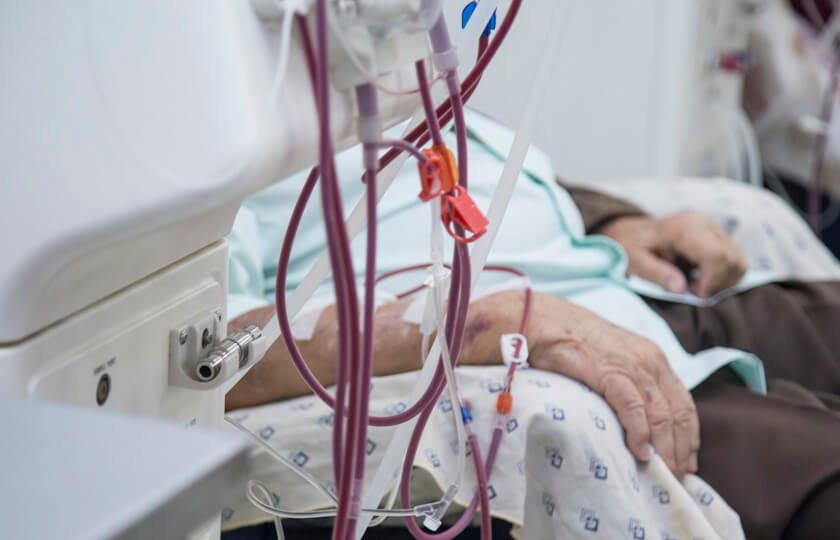
Central Venous Catheters vs. AV Fistulas: Comparing Benefits, Risks, and Outcomes
Central Venous Catheters and Arteriovenous (AV) Fistulas are two crucial medical options often employed in healthcare settings, particularly for patients requiring frequent blood access, like those undergoing dialysis. Making the right choice between these two depends on various factors including the patient’s condition, the intended purpose, and the benefits and risks associated with each. In this blog, we’ll explore these two options in detail, aided by the expertise of Dr. Sumit Kapadia, a renowned veins doctor and expert in endovascular surgery.
Central Venous Catheters (CVCs)
Central Venous Catheters (CVCs), also referred to as central lines, are thin, flexible tubes placed into a large vein, typically in the neck, chest, or groin. The insertion process, known as central line insertion, is a procedure performed under local anesthesia. CVCs are utilized when patients require long-term medication, nutrients, or fluids, or when frequent blood sampling is necessary. Larger sized CVCs are required for hemodialysis.
AV Fistulas
AV Fistulas, on the other hand, are the gold standard for providing vascular access for hemodialysis, a procedure often necessary for patients with kidney failure. A fistula for dialysis is created by directly connecting a patient’s artery to a vein, typically in the arm. This connection causes more blood to flow into the vein, making it grow larger and stronger for easy, repeated needle insertions for dialysis.
The Healing Power of HBOT for Leg Ulcers
Research into HBOT as a complement to traditional wound care for stubborn ulcers has yielded encouraging results. Studies have shown that HBOT can accelerate the healing trajectory, shrink ulcer size, and help avert the drastic measure of amputation, especially in diabetic patients. HBOT also exhibits more effectiveness in healing arterial ulcers compared to other treatments. But it is crucial to note that only a thorough evaluation by a seasoned vascular surgeon like Dr. Sumit Kapadia can determine the suitability of HBOT for an individual patient
Comparing Benefits, Risks, and Outcomes of Central Venous Catheters and AV Fistulas
To gain a holistic perspective on Central Venous Catheters and AV Fistulas, it’s crucial to consider and compare the benefits, risks, and outcomes associated with each. In this section, we will break down these elements, shedding light on critical factors such as infection rates, thrombosis and clotting rates, long-term patency rates, mortality rates, quality of life considerations, and cost implications.
Also Read: Why an AV fistula is Considered a Lifeline for Dialysis Patients?
Access-related infection rates
One of the most significant differences between CVCs and AV Fistulas lies in their infection rates. CVCs have been shown to have a higher rate of infection due to their direct entry into the central venous system. On the other hand, AV Fistulas, being a connection between an individual’s own blood vessels, tend to have lower infection rates, making them a safer option in this regard.
Thrombosis and clotting rates
Thrombosis, or clotting, is another risk that varies between the two. CVCs are more prone to thrombosis than AV Fistulas. The presence of a foreign body in the vein (the catheter) can promote clot formation, potentially leading to serious complications. AV Fistulas, though not immune to thrombosis, have lower clotting rates.
Long-term patency rates
When it comes to long-term patency rates (keeping the blood vessel open and functional), AV Fistulas generally outperform CVCs. Fistulas tend to last longer and have fewer complications related to blockages, providing a more reliable and durable option for patients needing long-term dialysis.
Also Read: Chemoport Insertion Procedure, Cost, and Complications Explained
Mortality rates and survival outcomes in Central Venous Catheters and AV Fistulas
Multiple studies have suggested that patients dialyzing through an AV fistula have a lower mortality rate compared to those with a central venous catheter. This may be attributed to the lower infection and clotting rates associated with AV Fistulas.
Quality of life considerations
Quality of life can also be a deciding factor. AV Fistulas, once matured, are typically less restrictive, allowing patients more freedom for daily activities. In contrast, patients with CVCs need to be more cautious to prevent infections or dislodging of the catheter. This may include precautions in neck movements as well as inability to have a bath in case of CVCs.
Cost implications in Central Venous Catheters and AV Fistulas
From a cost perspective, while the initial setup cost for AV Fistulas may be higher due to the surgical procedure involved, they tend to be more cost-effective in the long run due to their lower complication rates and longevity compared to CVCs.
Conclusion:
Both Central Venous Catheters and AV Fistulas have their own set of benefits and risks. The choice between the two depends on the individual patient’s health condition, lifestyle, and specific medical needs. It’s crucial to discuss these factors in detail with a specialist in endovascular surgery, such as Dr. Sumit Kapadia. His expertise can guide you through understanding your options and choosing the most appropriate solution for your unique situation.
Follow us on YouTube

MBBS, MS, MRCS, DNB-Fellow
Dr. Sumit Kapadia
Dr. Sumit Kapadia / MR KAPADIA SUMIT a gold-medalist from Baroda Medical College, obtained his general surgical training and senior residency from SSG Hospital, Vadodara.

MBBS, MS, MRCS, DNB-Fellow
Dr. Sumit Kapadia
Dr. Sumit Kapadia / MR KAPADIA SUMIT a gold-medalist from Baroda Medical College, obtained his general surgical training and senior residency from SSG Hospital, Vadodara.




